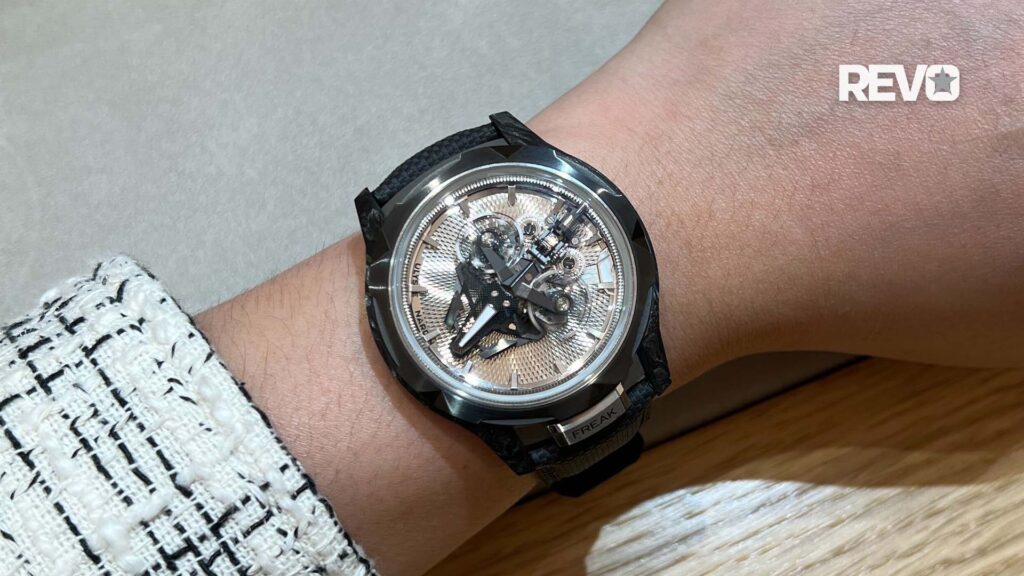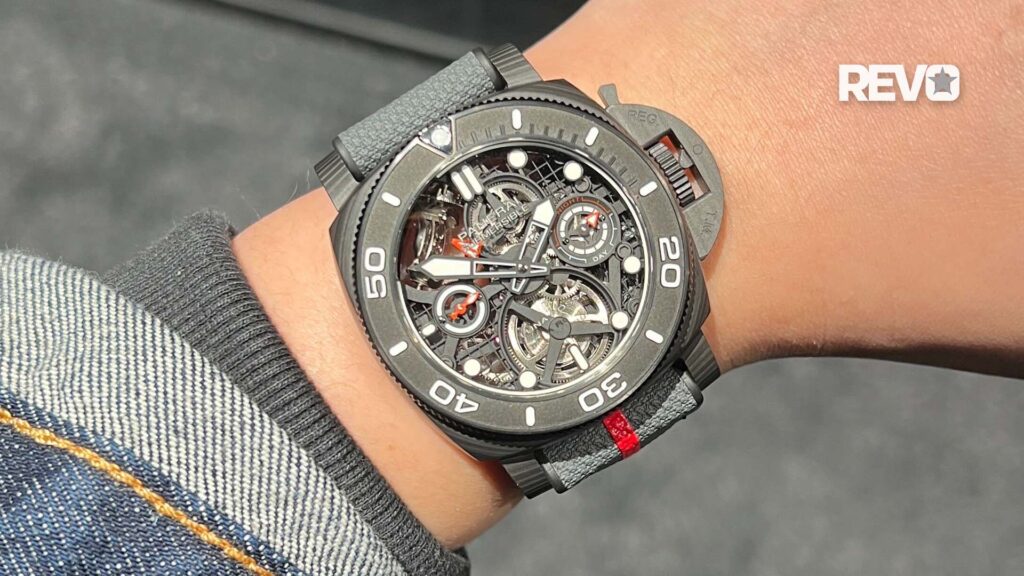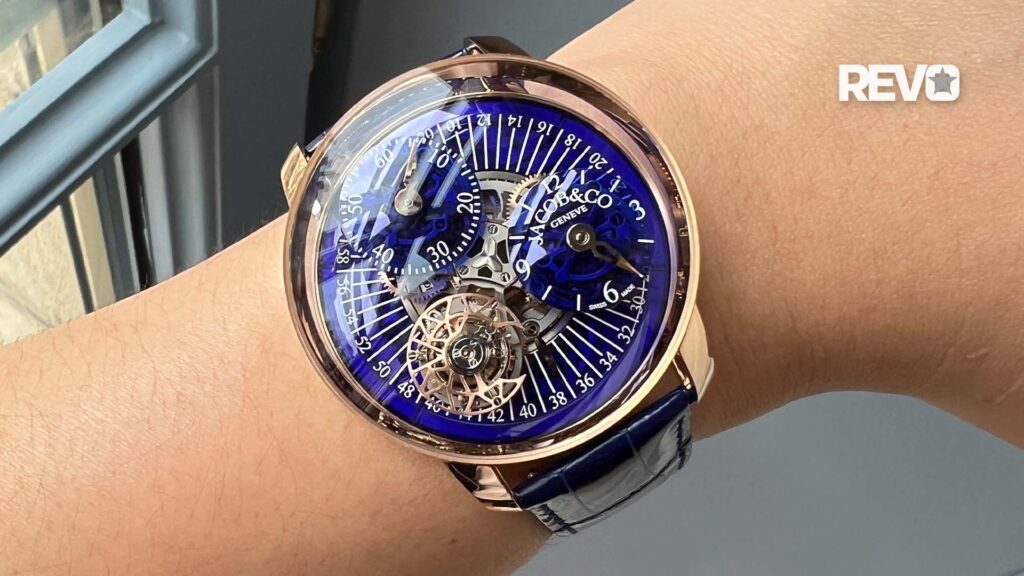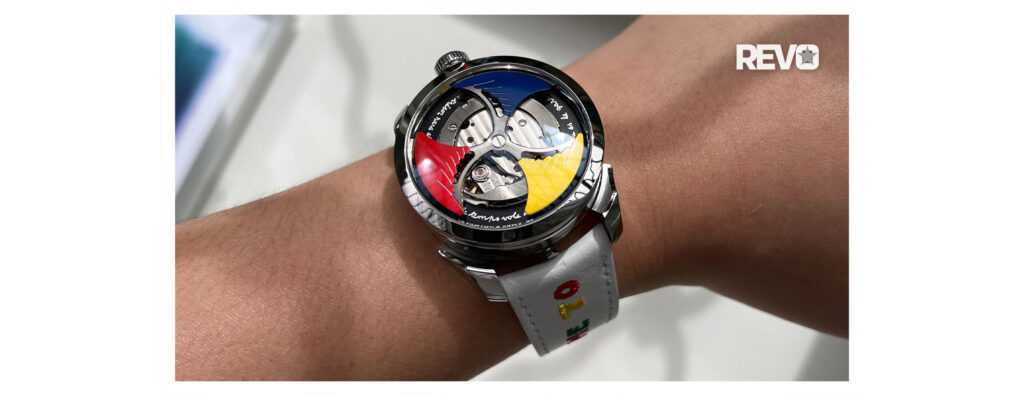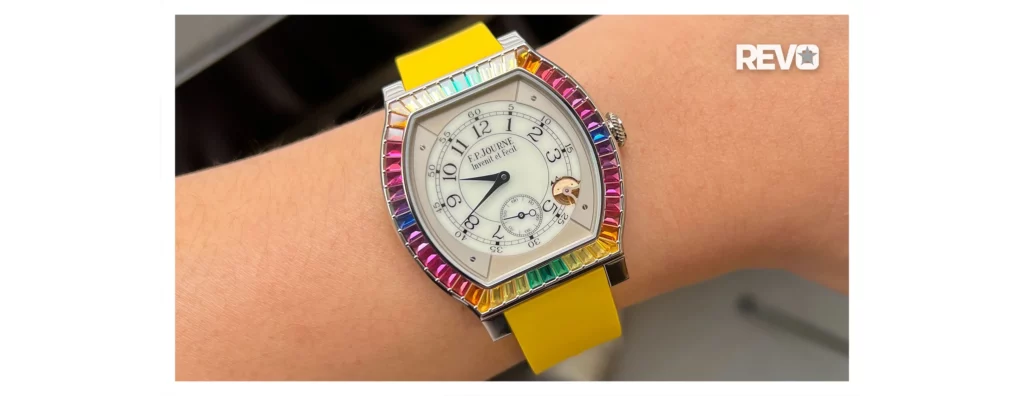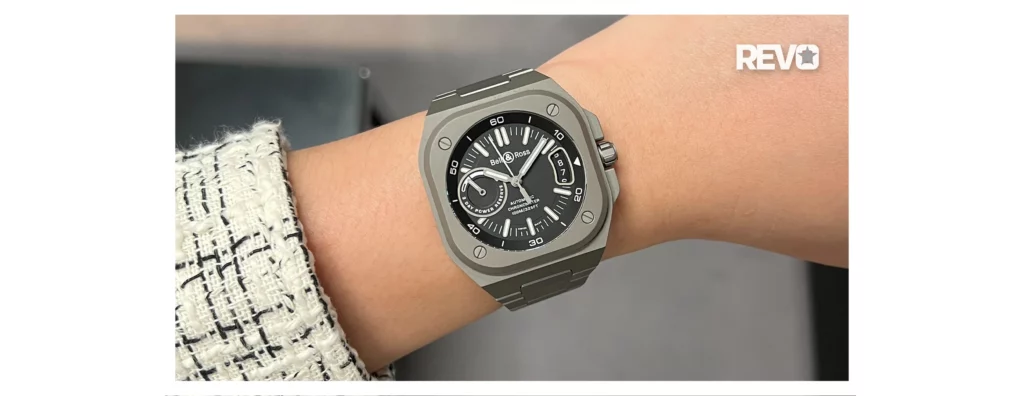Hamilton
In-Depth: Hamilton Khaki Military
To support the war effort, Hamilton halted all consumer production to focus on producing for the armed forces, making more than one million watches during the war period. Hamilton made watches and other timepieces, as well as timers and other instruments, including precision marine chronometers.
Due to its high quality, Hamilton was awarded the U.S. Army-Navy “E” Award for manufacturing excellence.
Wartime conditions required the brand to innovate — when access to traditional watch oils for lubrication was halted due to the war, Hamilton’s chemists developed new, superior oils, as well a special, non-spreading compound.
Before World War II, Hamilton obtained the American rights to Elinvar, a non-magnetic alloy, to use for its hairsprings. Shocked at the variance in quality of Elinvar, Hamilton developed its own hairspring alloy, Elinvar Extra, which solved those problems. Visiting the Hamilton factory in 1943, Marvin E. Whitney of the United States Naval Observatory said, “I was amazed at the quality control and care taken in producing the new alloy. It was like being in a medical laboratory.”
Marine Chronometers
Navigation on the open seas was an area of concern for the U.S. Navy. There was no satellite navigation back then, and ships couldn’t transmit long range radio, fearful that the enemy could home in on the ship’s position, so the Navy required dead reckoning — using the heavens to navigate.
The government put out a bid to all watch companies to produce marine chronometers. These chronometers were in effect large, very precise pocket watches on gimbals, so they were unaffected by the pitch and roll of the ships. The only company able to mass produce marine chronometers to the Navy’s exacting standards was Hamilton. Hamilton went on to produce more than 10,000 chronometers during World War II. These marine chronometers, especially those in their original wooden boxes, are prized collector items today.
In fact, the plaque accompanying the Hamilton Marine Chronometer displayed at the Smithsonian Institution in Washington, D.C., is inscribed, “These chronometers performed so well that they are in great demand wherever chronometers are used. To produce such a superlative instrument under the handicap of wartime conditions is a great triumph for its makers.”
René Rondeau, Hamilton expert and retired watchmaker and author, emphasizes Hamilton’s strong military heritage. “Hamilton’s biggest claim to fame was the marine chronometer, which was an incredible achievement,” he says. “They were not the only company to supply watches to the U.S. Military, but they were by far the most important. From talking to a lot of people over the years, there have been quite a few old soldiers who went to great lengths to keep their Hamilton watches because they were supposed to be turned in. The experience of soldiers who had Hamiltons was a huge plus when they went back to civilian life, because of their experience with Hamilton during the war. They valued Hamilton quite highly.”
At auction, there are some coveted Hamiltons that have realized great prices, like a Ventura purchased by Elvis, which sold for $12,800, and the Hamilton worn by Robin Williams in Dead Poets Society, which realized $32,500. Hamilton military watches sell for anywhere from $60 to $500 on the secondary market, depending on vintage and condition. Many of the military issue timepieces, however, do not say Hamilton on the dial. Hamilton marine chronometers sell for between $1,400 and $4,000, depending on condition, which appears to be less than they are worth, given their historical importance.
Even though the Hamilton military watches are not highly prized on the secondary market, they are pieces of American history and that might make them meaningful and collectible to you.
The Khaki Field Mechanical 38mm
The Khaki Field has been in Hamilton’s collection for some time, and many of its versions are best sellers. The Khaki Field Chronograph worn by John Krasinski in Amazon Prime’s Jack Ryan has become one of the sales leaders, but the crown for 2018 goes to the Khaki Field Mechanical 38mm.
The Khaki Field Mechanical 38mm is an homage to the brand’s military heritage and designed to be the perfect combination of a vintage piece with modern technology. Based on the original soldier’s watch, the Khaki Field Mechanical 38mm has everything you need and nothing that you don’t. Powered by a hand wind mechanical and on an attractive NATO strap, this timepiece is hard-wearing but light and very comfortable.
“The Khaki Field is our heritage product, but it’s also perfectly in the style of what young people are wearing today,” he continues. “If there is one watch that is credible with a NATO strap, it’s the Khaki Field Mechanical. It’s my favorite watch today. I have both of them and I wear them all the time.”
Vintage Hamilton Khaki Military Watches
H001.00.000.367.01 WWII US Navy Logo Wristwatch
WWII Service Logo Watch 1942
In 1942, Hamilton halted consumer production to concentrate on supplying the military. This is one of the many watches made during that time. In the early to mid-1940s, Hamilton regularly ran advertisements to advise customers that the company was busy working hard to support the war effort and to reassure them that normal service would be resumed a soon as the war ended. Cushion stand. Insurance value 3,000 CHF.
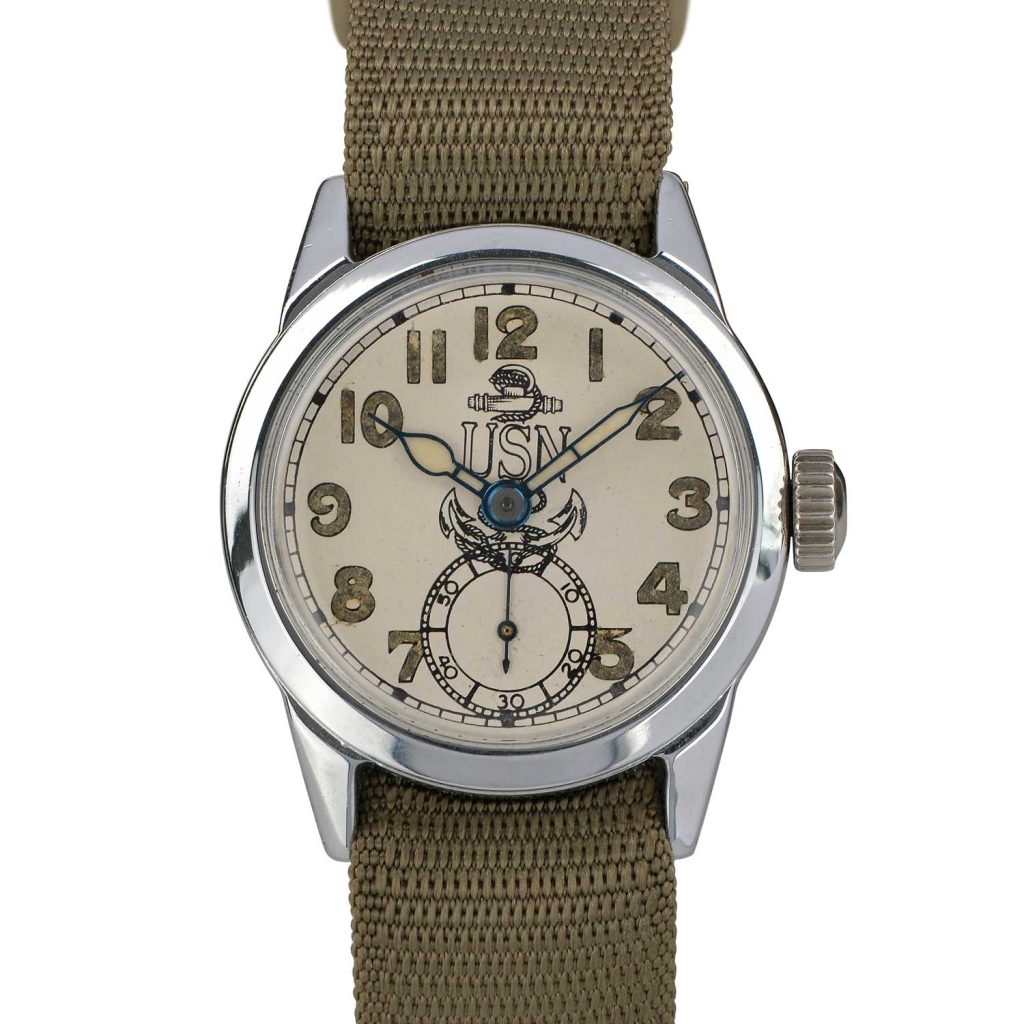
WWII Service Logo Watch 1942
H001.00.000.371.01 WWII Ordnance Wristwatch
U.S. Army Ordnance Department Watch 1942
Caliber 987 was Hamilton’s best movement, powering millions of military issue watches. When the U.S. became involved in WWII, the Pentagon chose one of Hamilton’s 987 movements for all members of the armed forces. Shortly afterward, in 1942, Hamilton stopped all consumer production of its watches to concentrate on supplying the military with precision wristwatches, timers, meters and marine chronometers during the years of conflict. The 987A was a slightly later development, featuring a sub-dial for seconds. It was produced for military use until 1948 and, during that time, almost half a million model 987A watches were produced. This 987A model from 1942 has no hack function.

U.S. Army Ordnance Department Watch 1942
H001.00.000.378.01 Military Wristwatch Grade II
Grade II Military Wristwatch 1944
These standard issue wristwatches were made for the military. Grade II refers to the accuracy requirements as specified by the U.S. military. Grade I watches required a deviation of no more than 7 seconds per day, Grade II 30 seconds and Grade III 60 seconds per day. The grades were not an official specification but referred to how and to whom the watches might be assigned based on their level of accuracy. For example, a pilot would likely require a more precise watch than someone working on the ground.
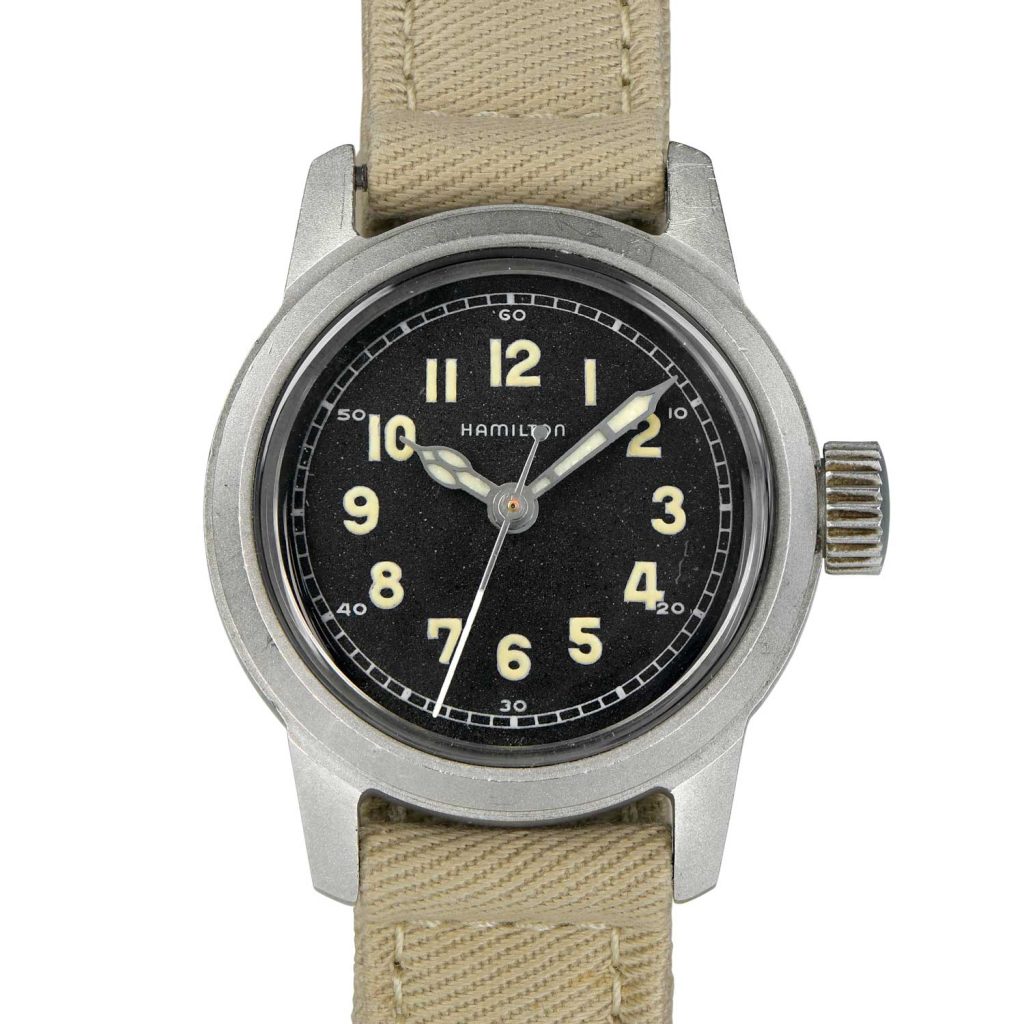
Grade II Military Wristwatch 1944
Military Wristwatch “Khaki Field”
Hamilton Military Watch 1966
This military watch features the grade 649 movement with “hacking’” or stop second device which allows watches to be synchronized accurately. Now a standard feature on automatic watches, this was quite unusual at the time. Between 1965 and 1983, this movement was used in various Hamilton wristwatches and this particular model is engraved with the U.S. military federal stock number, showing that it was issued in January 1966. The design – dark dial, white luminous numerals – was the inspiration for the 2018 Khaki Field Mechanical.
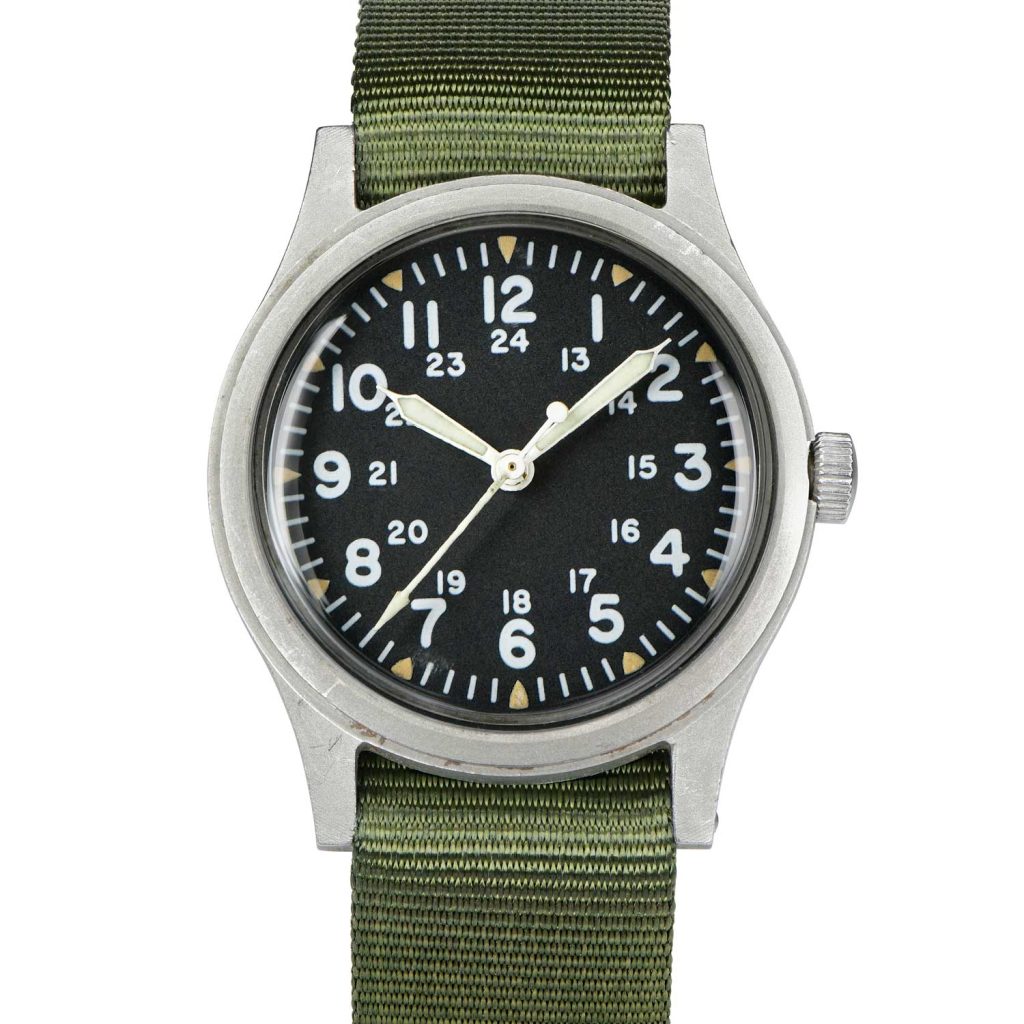
Hamilton Military watch 1966




